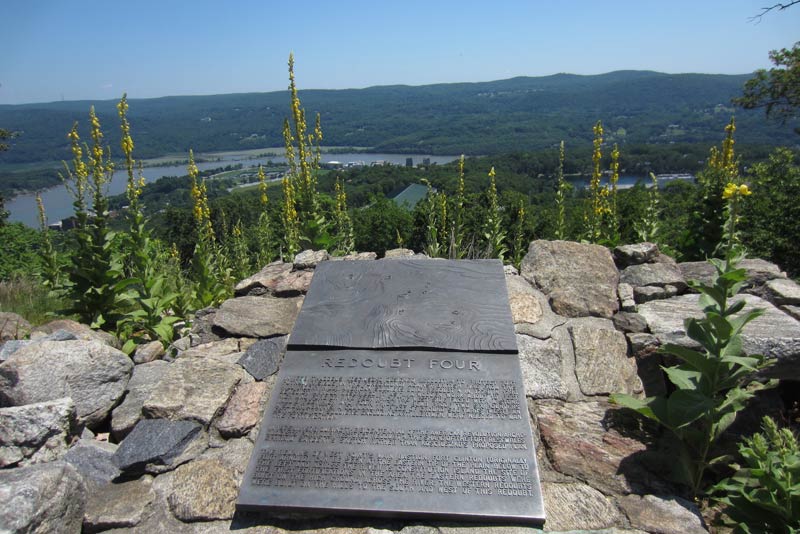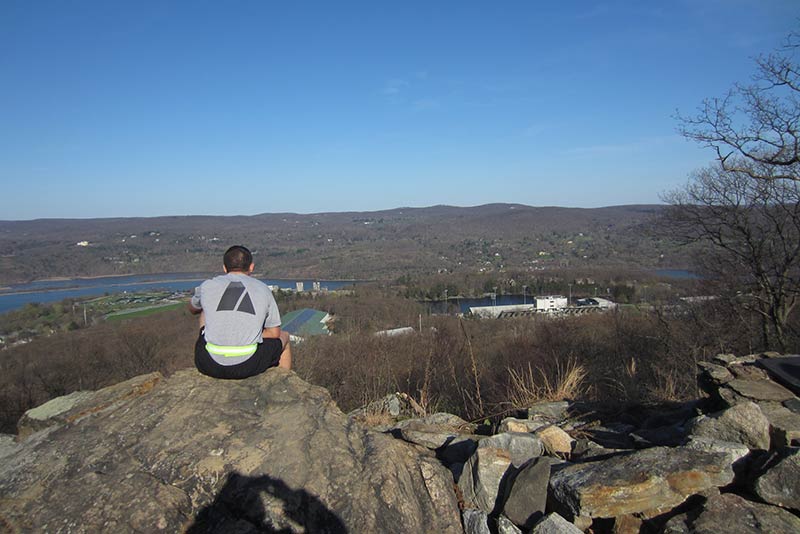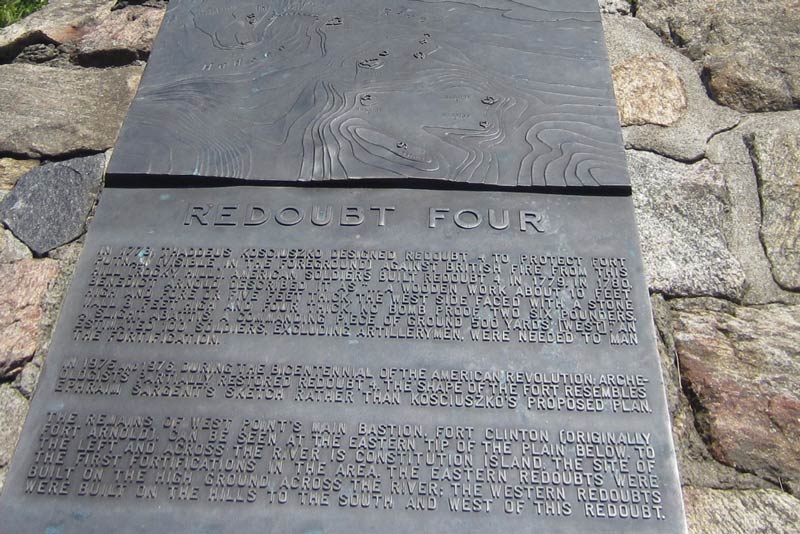Redoubt 4
SIGNIFICANCE:
Having had success building on the high ground at the Battle of Saratoga, Polish engineer Kosciuszko was eager to cover the high ground at Fortress West Point as well. His original design for a larger redoubt was modified after the Battle of Stony Point, most likely due to the sense of urgency to get something constructed quickly. Redoubt 4, as it was eventually constructed, was documented by Captain Ephraim Sergent in a drawing he completed in 1780. His drawing matches the remnants that still exist today at Redoubt 4 at West Point.

Commanding one of the most spectacular views of the Hudson River and the treacherous “S” Curve at “Worlds End,” Redoubt 4 is a favorite location for cadets to visit after a long uphill run. The entire expanse of Fortress West Point can be viewed from this location.

There is speculation that the British strategy for taking Fortress West Point would begin with a ship docking down river and then a landward march of troops up to this redoubt at the highest point. When the first ring of fortifications was taken, the British soldiers would continue down to take Fort Putnam and the next ring of fortifications, and eventually take Fort Clinton/Arnold on the Plain and then disassemble the Great Chain.
Prior to his treason, it was Redoubt 4 that Commanding General Benedict Arnold made sure was only secured by two soldiers instead of the fifty men called for in the original design. After General Washington’s devastating discovery of General Arnold’s treachery – discovered at Arnold’s residence just across the Hudson River at the Beverley Robinson House – Washington issued an alert to all the troops in the Highlands warning them of imminent attack by the British. This original notice by General Washington can be viewed in the USMA Library.


